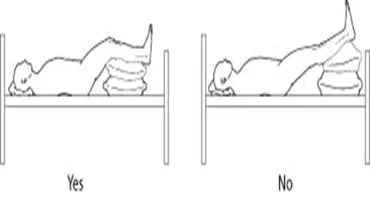Inflammation is our body’s fundamental response mechanism to injury, irritation, or surgery. It’s an important process, yet one that remains obscure to many. Enter acute inflammation, an immediate protective reaction that ensures our body rebounds from trauma as swiftly as possible. If you’ve ever been curious about acute inflammation—the what, why, and how’s—we’ve got you covered.
An Introduction to Acupuncture Inflammation
When something triggers an inflammatory response in our bodies, be it trauma or surgery, we often experience swelling, pain, and increased warmth and redness of the skin. In essence, these are the traits of inflammation, a reaction that can either be acute or chronic.
Acute inflammation, unlike its chronic counterpart, is a fast response, typically occurring within two hours of a triggering event. In contrast, chronic inflammation is an ongoing reaction to long-term medical conditions, such as arthritis. It’s noteworthy to understand that while an infection can result in inflammation, they’re not identical and hence get treated differently.
Acquiring Awareness: Decoding the Symptoms
You might be wondering, “What are the signs of acute inflammation”?
- Swelling: A characteristic reaction leading to the accumulation of fluids in the affected areas.
- Pain: It can range from mild discomfort to significant pain, primarily caused by the swelling.
- Increased Warmth and Redness: These symptoms occur because of the increased blood flow to the inflamed area.
Addressing Acute Inflammation: The Initial Response
How we respond to acute inflammation can influence the overall healing process, and the earlier we begin treatment, the better. The standard procedure for managing acute inflammation in the foot or ankle primarily involves RICE therapy:
- Rest: Refrain from any activity that could potentially worsen the injury.
- Ice: An ice pack can help in reducing inflammation, but ensure to place a thin towel between the skin and the ice pack. Use ice for 20 minutes, with a gap of at least 40 minutes before the next application.
- Compression: Use an elastic wrap to control swelling.
- Elevation: Elevate the foot or ankle above heart level to reduce swelling.

Often, an expert foot and ankle surgeon may also prescribe a nonsteroidal anti-inflammatory drug (NSAID), such as ibuprofen or another type of medication to manage acute inflammation.
Prolonged Pain and Discomfort: When to Seek Help?
While the symptoms of acute inflammation generally improve within two to three days, there are instances when the discomfort persists or worsens. If this happens, it is crucial to consult your doctor or visit an emergency room to rule out any severe conditions.
As a patient, it’s fundamental to follow your doctor’s advice diligently. Be it regarding the management of an injury or postoperative care, adhering to your doctor’s instructions can significantly improve the recovery process.
Closing Thoughts: Acute Inflammation and You
Acute inflammation might be a cause of temporary discomfort, but it is the body’s primary line of defense against harm. However, if the discomfort persists or becomes unbearable, seeking professional help is necessary to ensure it is not indicative of a more severe condition. Remember, a healthy body is a result of timely intervention and a keen understanding of what your body is trying to communicate.
Frequently Asked Questions
Q: What are examples of acute inflammation?
A: Acute inflammation can occur due to various reasons, including a sprained ankle, an insect bite, acute bronchitis, a sore throat from a cold or flu, or acute appendicitis.
Q: What are the 4 signs of acute inflammation?
A: The four primary signs of acute inflammation are heat, pain, redness, and swelling. There can also be a loss of function in the affected area.
Q: Is acute inflammation serious?
A: Acute inflammation is usually beneficial and aids in healing. However, if it doesn’t resolve and turns into chronic inflammation, this can lead to health problems.
Q: What are the 5 signs of acute inflammation?
A: The classical signs of acute inflammation include pain, heat, redness, swelling, and loss of function.




